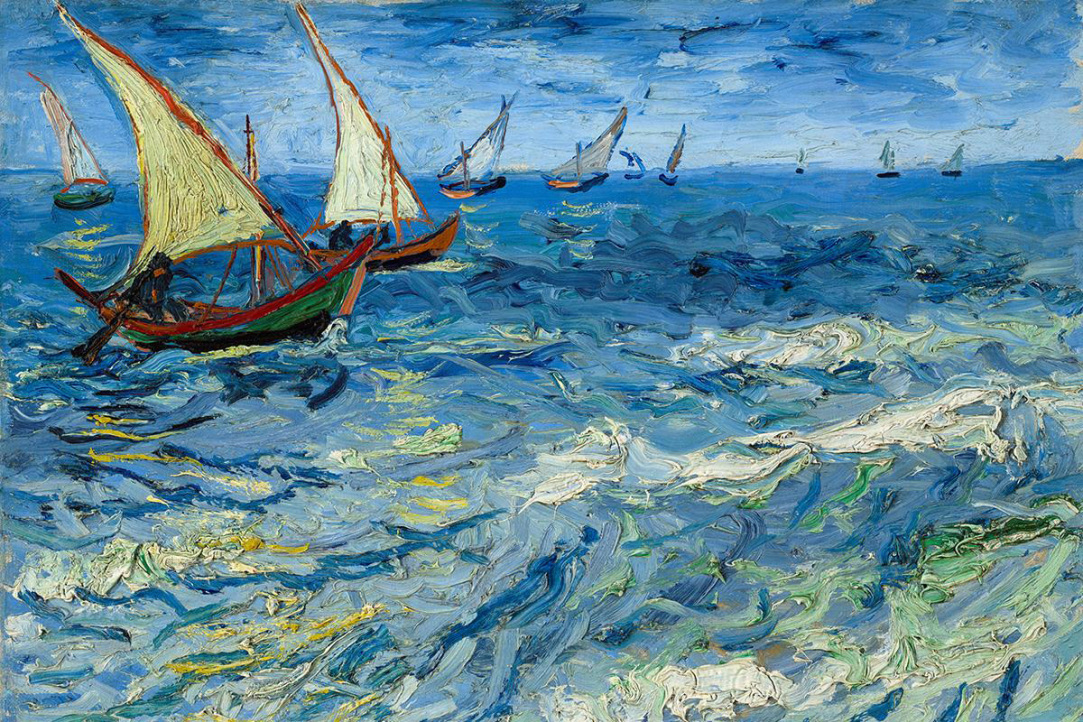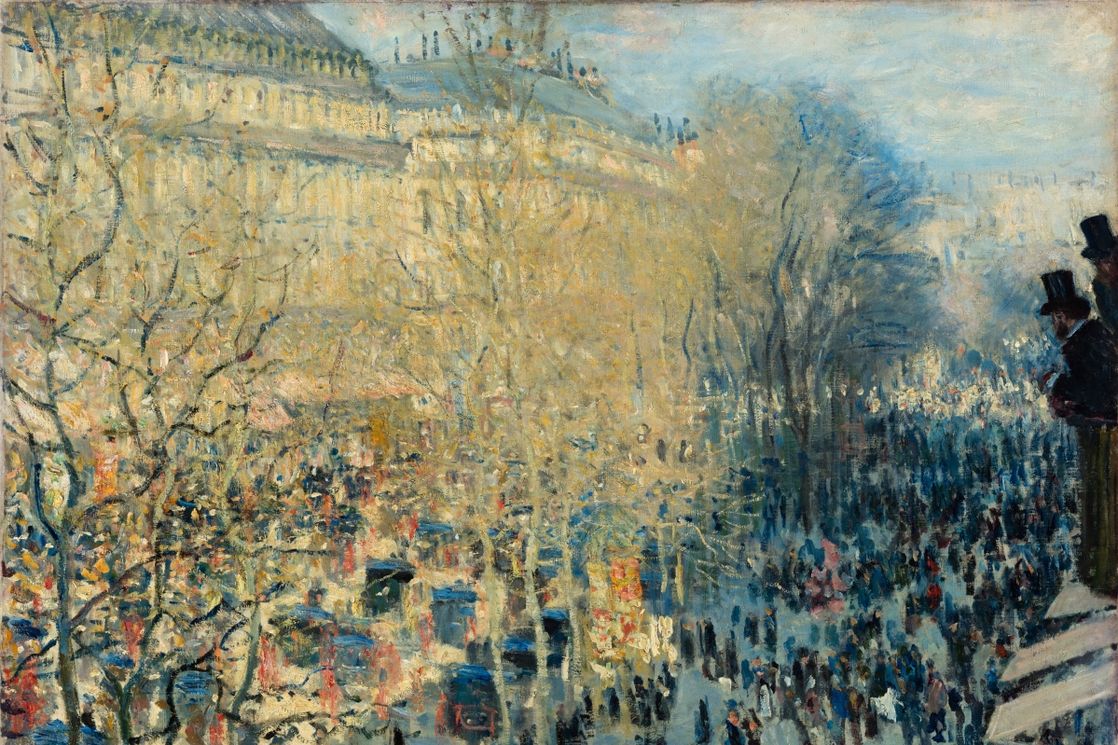A Journey Through Time and Culture: Three Exhibitions from the Pushkin Museum and Tretyakov Gallery

Paintings by Monet, Renoir, Malevich, van Gogh, Kandinsky, and many other prominent artists are on display at exhibitions in Moscow right now, together with golden treasures from Sarmatian nomad heritage.
The Pushkin State Museum of Fine Arts in Moscow is currently hosting two exhibitions titled ‘After Impressionism’ and ‘The Gold of the Sarmatian Leaders’, which offer different dynamics and perspectives of art throughout history.
‘After Impressionism. Russian Painting in Dialogue with New Western Art’
Until 20 August
The exhibition brings together a collection of paintings from some of the most renowned artists of the late 19th and early 20th centuries, including Claude Monet, Pierre-Auguste Renoir, Ilya Repin, Kazimir Malevich, Paul Cezanne, Vincent van Gogh, and Paul Gauguin.
The exhibition's focus is on exploring the era of new artistic languages in Russian and Western art that emerged after impressionism. It aims to showcase the artistic searches of these artists, who were trying to break free from traditional artistic techniques and explore new forms of expression. One of the most significant aspects of the exhibition is its demonstration of the rapid development of Russian painting at the turn of the century. The interaction between European and Russian art during this time was crucial in shaping the artistic landscape of both regions.

The exhibition is divided into several sections, each showcasing a different aspect of the era. The first section focuses on impressionism and features works by Monet and Renoir. The second section explores the artistic searches of Cezanne, van Gogh, and Gauguin, who were keen on developing new forms of expression in Western art. The third section features works by Russian artists such as Repin and Malevich, who were at the forefront of the development of Russian painting during this period.
Address: Volkhonka, 12
Opening hours: Tue–Sun: 11 am–9 pm
Tickets: 350–550 roubles.
‘The Gold of the Sarmatian leaders’
Until 23 July
The Pushkin Museum is also showcasing an exhibition titled ‘The Gold of the Sarmatian Leaders’, which displays various artifacts from the Filippovskiy barrows, a collection of Sarmatian nomad heritage. The exhibition brings together pieces from the Ufa Federal Research Centre of the Russian Academy of Sciences and the Orenburg Governor's Museum of Local History, which were discovered during archaeological excavations conducted in various years. It is the result of collaborative efforts between different institutions and will allow visitors to see these lesser-known works for the first time.

The Sarmatians were nomadic people who lived in the Southern Urals between 2,500 and 1,600 years ago. Their social structure and culture can only be understood through excavations of their necropolises, where artifacts such as armour, weapons, household and ritual vessels, and jewellery have been found. The exhibition showcases genuine gold and silver items from the Orenburg Governor's Museum of Local History, some of which have never been exhibited before. Visitors can also listen to tifloopera—an audio commentary in the form of opera parts by composer Pyotr Aidu—while viewing the artifacts. Solo parts will be played on six monophonic audio devices located at different ends of the exposition space.
Address: 12 Ulitsa Volkhonka
Opening hours: Tue–Sun: 11 am–9 pm
Tickets: 400–600 roubles
How to get there:
There are two ways to get to The Pushkin Museum on Volkhonka street: a 15-minute walk from Exit 7 of Borovitskaya station or Exit 2 of Kropotkinskaya station.
Additionally, the State Tretyakov Gallery is offering art enthusiasts the opportunity to ‘see the unknown’ through their latest exhibition titled ‘To See the Unknown. Painting and Sculpture of the 17th–21st Centuries from the Collection of the Tretyakov Gallery’.
‘To See the Unknown. Painting and Sculpture of the 17th–21st Centuries from the Collection of the Tretyakov Gallery’
Until 13 August
The exhibition showcases works by both renowned and lesser-known artists from the Museum's collection, with some pieces being displayed for the first time. The exhibition is an extension of the ‘My Tretyakov. From the Virtual to the Real’ digital project, which aims to provide wider access to the museum's collection.
The works are categorised based on their genre, including architecture and cityscape views, interior and genre paintings, and historical works. This allows viewers to compare and contrast themes developed by artists from different eras. The exhibition features works by notable artists such as Fyodor Alekseyev, Wassily Kandinsky, Karl Beaudry, Aristarkh Lentulov, Natalia Goncharova, and Alexei Venetsianov. By showcasing paintings with similar narratives, but different modelling language and colour schemes, the exhibition offers a fresh perspective on famous works. The sculptural section of the exhibition includes works by 18th–20th century artists such as Fedot Shubin and Igor Shelkovsky. Rarely seen porcelain compositions by Alexei Sotnikov, which have received numerous international awards, are also on display.
Address: Krymsky Val, 10
Opening hours: Tue, Wed, Sun: 10 am–6 pm; Thu, Fri, Sat: 10 am–9 pm
Tickets: 300–350 roubles
How to get there:
The New Tretyakov Gallery is located near Oktyabrskaya and Park Kultury metro stations. It
is about a 10-minute walk from Oktyabrskaya and 15–20 minutes from Park
Kultury station.
Text by Lý Trang, second-year master’s student of Critical Media Studies, intern at the HSE University English website team

